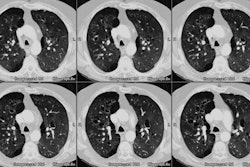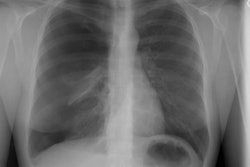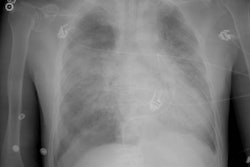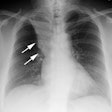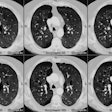Radiology 1996 Sep;200(3):673-679. Bronchiectasis: comparative assessment with thin-section CT and helical CT.
Lucidarme O, Grenier P, Coche E, Lenoir S, Aubert B, Beigelman C
PURPOSE: To compare thin-section computed tomography (CT) and helical CT in the detection and assessment of the extent of bronchiectasis. MATERIALS AND METHODS: Both thin-section and helical CT scans were obtained in 50 consecutive patients with clinical symptoms suggestive of bronchiectasis. Thin-section CT was performed with 1.5-mm collimation and 10-mm intervals, and helical CT was performed with 3-mm collimation and a pitch of 1.6 during a 24-second breath hold. Three observers evaluated 593 segments on CT scans both independently and in consensus. Radiation dose was measured for both techniques. RESULTS: Bronchiectasis was noted in 77 segments (22 patients) on thin-section CT scans compared with 90 segments (26 patients) on helical CT scans. No findings were positive for bronchiectasis on only thin-section CT scans. Interobserver agreement was statistically significantly better (P < .05) in identification of segments that were positive for bronchiectasis on helical CT scans (kappa = 0.87) than on thin-section CT scans (kappa = 0.71). Total skin dose of radiation delivered with helical CT was 3.4 times greater than that delivered with thin-section CT. CONCLUSION: Helical scanning can improve CT depiction of bronchiectasis but with an increase in radiation exposure to the patient. It should be used in patients considered for surgery or for thin-section CT scans that are difficult to interpret.
PMID: 8756913, MUID: 96347833
